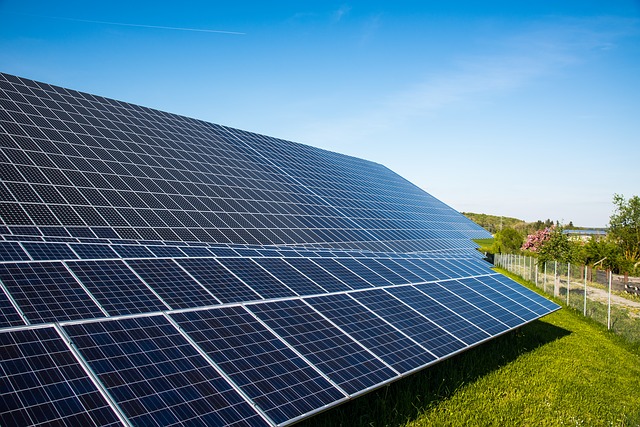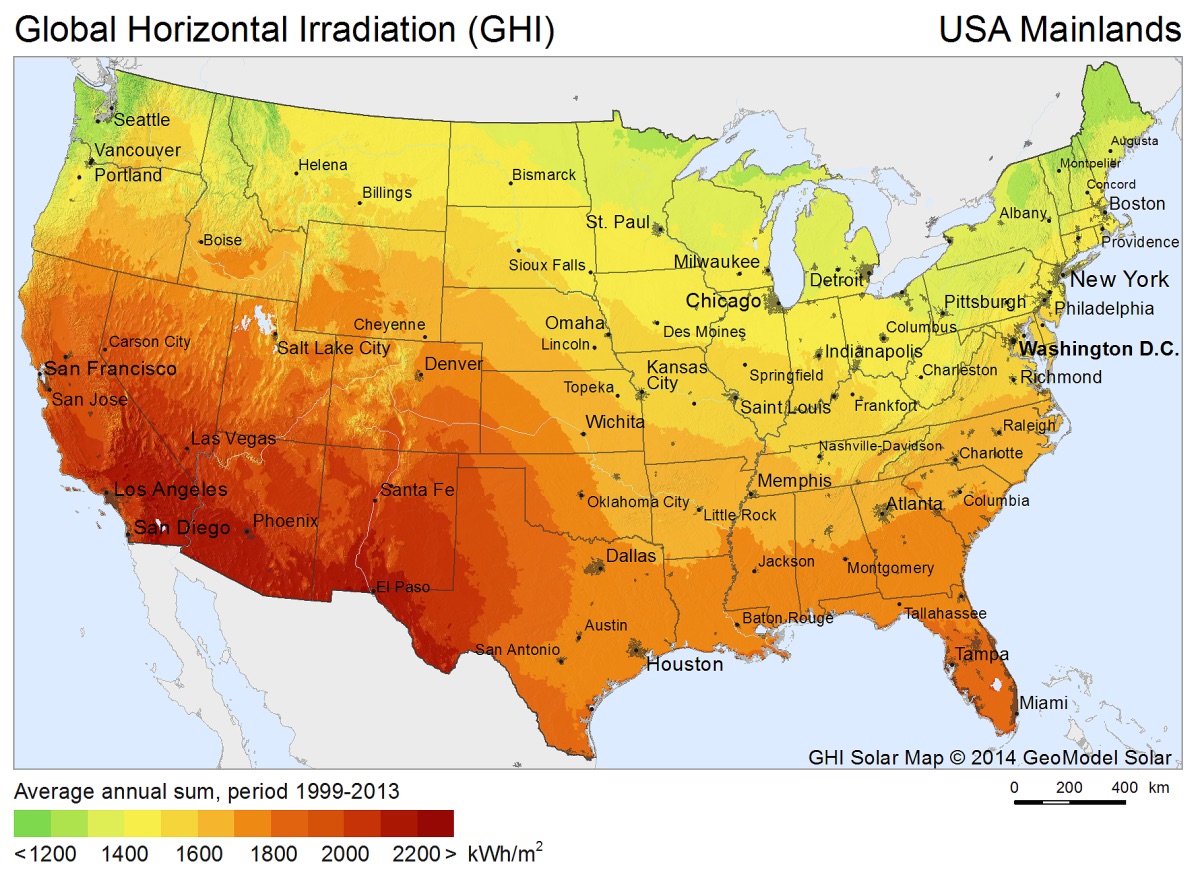Solar Energy In Texas
Texas holds enormous potential to be a significant producer of solar power. What will it take to get it there?

Summary:
General Overview
Texas currently has 330 MW of installed solar capacity--a 100x increase in seven years! This is enough to power 57,000 homes, and is increasing rapidly. Last year, Texas installed 129 MW of new solar, which represented an investment of $252 million. Overall, this investment and falling prices (the price per watt is down 50% since 2010) have meant that Texas ranks 10th in the nation for installed solar capacity.
This has more than just environmental implications for Texas, but economic ones as well. The almost 400 solar companies present in Texas employ more than 7,000 people directly, and support a supply chain that employs many thousands more.
Major solar installations in Texas include:
- Alamo 4 Solar Farm - completed in 2014 by OCI Solar Power, generates 39 MW, which is enough to power 4,200 homes.
- Barilla Solar Project in Webberville - the first merchant solar project in the United States, which was developed by First Solar and Austin Energy, and generates 30 MW.
- Major retailers like REI, Applied Materials, Kohl's, Campbell's Soup, Target, and IKEA have gone solar, with roof-based installations.

solar intensity across the United States
Prospects for Solar Power in Texas
Texas has the largest potential of solar energy in the United States--enough to provide 20% of the entire country's energy needs. A quick fun fact about the sheer power of the Texas sun--covering half of a residential roof with photovoltaic cells would be enough to meet the electricity needs of an average Texas family. According to the National Renewable Energy Laboratory, Texas has 60,000 MW of potential rooftop PV, 154,000 MW in potential urban utility-scale PV, and a whopping 20.5 million MW in potential rural utility-scale PV! In the map of solar intensity across the US, Texas is clearly well-positioned geographically to become a major producer, with all of the economic benefits that entails.
Solar is quickly becoming more and more affordable for consumers, as well as a profitable investment. In the past five years alone, the cost of generating solar electricity has fallen 78%, and the price of photovoltaic cells has plummeted in the past several decades which has made solar energy one of the lowest cost sources of energy per KWh when producing at full capacity.
Of course, solar has drawbacks as well. Perhaps primarily is that full capacity production is only intermittently attained. Solar's potential is limited by the availability of the sun during the day, performing at full capacity only with peak sun, declining under cloudy conditions, and requiring either large-scale storage or other sources of generation that can take over during the night. Because of this, solar can put heavy strains on electricity grids, though decentralized battery-based storage, along with accompanying smart grids are innovations aimed at solving these problems.
In 2014, the US installed 6,200 MW of solar capacity, at a market value of $13.5 billion. Texas ranked 8th in solar investment, with 130 MW of capacity installed. Such potential for solar means the potential for jobs as well. From 2013 to 2014, the US solar industry grew employment by 21%, to more than 170,000 workers.
So, Why Not More Solar?
Texas has done well, but if it were a student getting back a report card, it might find that its teacher had written, "does not live up to potential." Given the enormous potential for solar in Texas, why has investment and installation lagged behind that in other, less sunny states, and behind wind in Texas?
One reason is a relative lack of market startup incentives, like financing facilities and tax rebates that have worked well to spur solar markets in other states. When a renewable energy standard was signed in 1999, it called for 2,000 MW of renewable energy, but didn't specify what renewable. As a result, early investment went heavily into wind, which entailed lower startup costs, and was more familiar to investors, who perceived it as less risky. Furthermore, Texas doesn't have "net metering," a policy that allows residential solar customers to sell excess electricity back to the grid for full retail credit. The main incentives for solar in Texas come not from the state itself, but from the federal government.
The Future of Texas Solar
Despite this current "not living up to potential," solar might have a bright future in Texas. Glaringly bright. Austin Energy, which supplies power to 1 million people in the Texas capital, plans to produce up to 55% of its electricity from renewable by adding 600 MW of solar power to its portfolio by 2017--an enormous increase from the 50 MW it has currently, and from the 28% of its generation that comes from renewable sources. This would be done by directly installing capacity, and leasing production from independent firms, with capacity increasing to 950 MW by 2025.
Georgetown, TX made international headlines when it announced that it would become one of the nations only cities powered 100% by renewable energy. A town of environmentalists? Hardly. As its mayor declared, the decision was made for its pure, green, economic sense.
